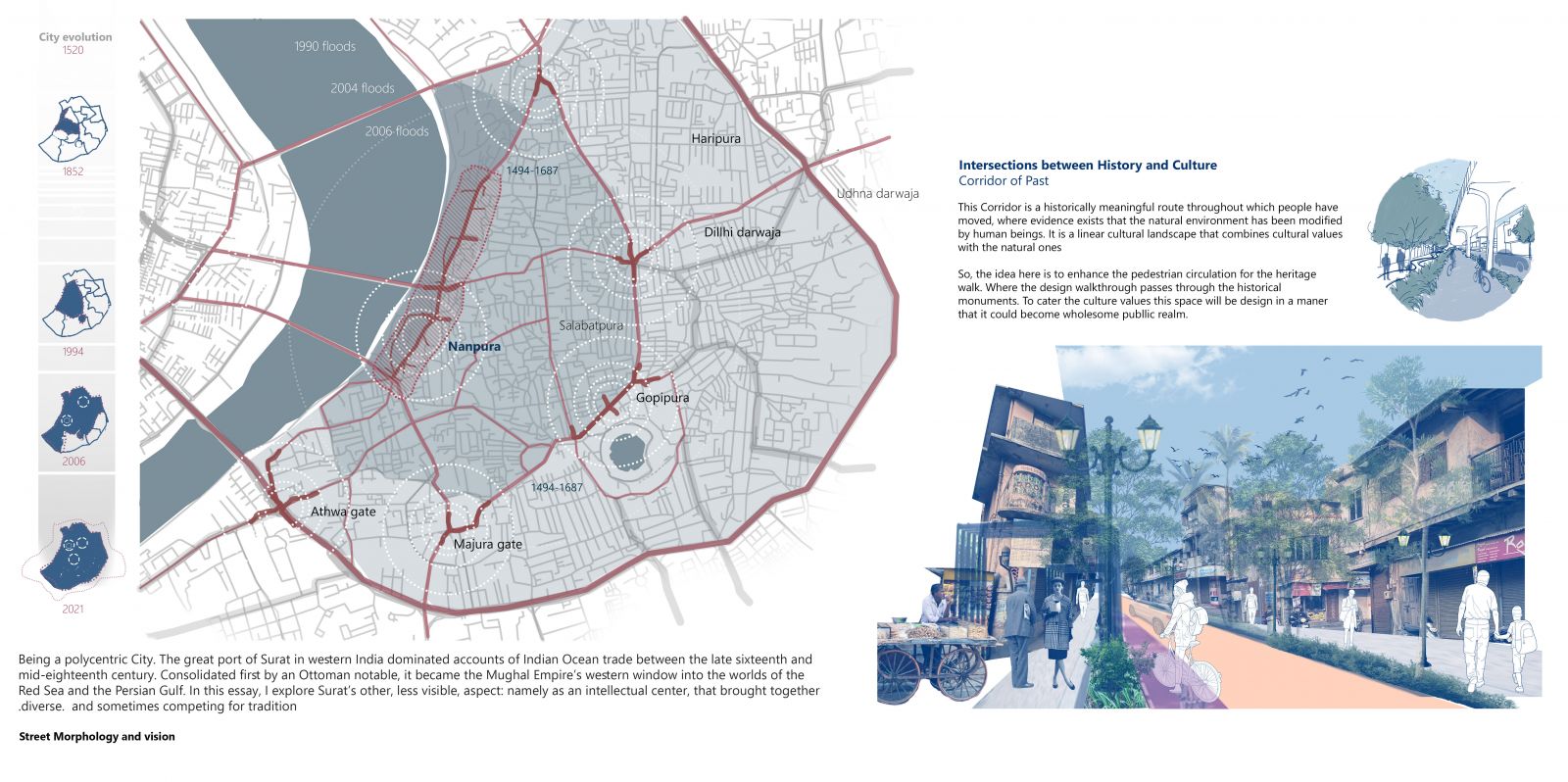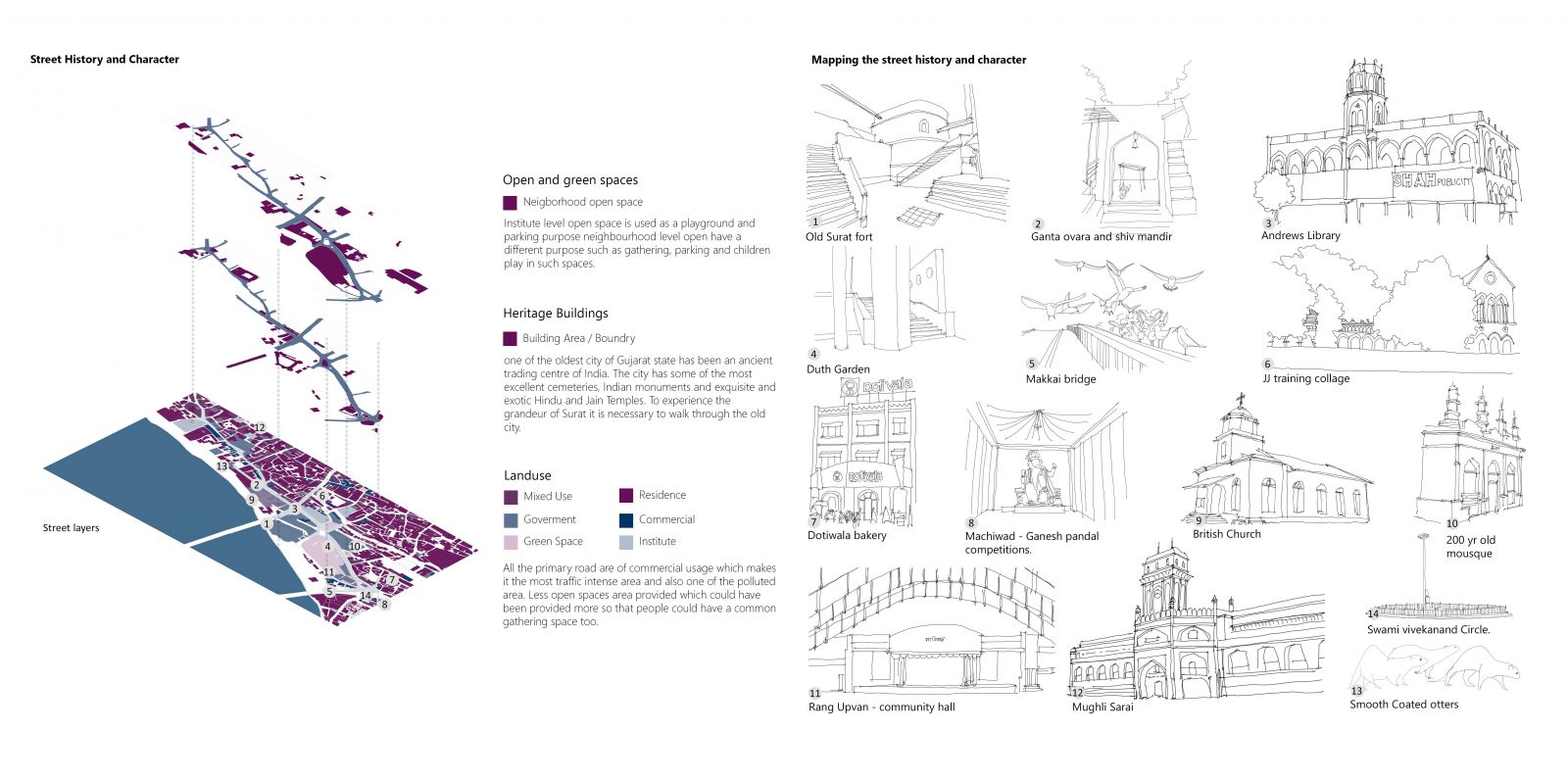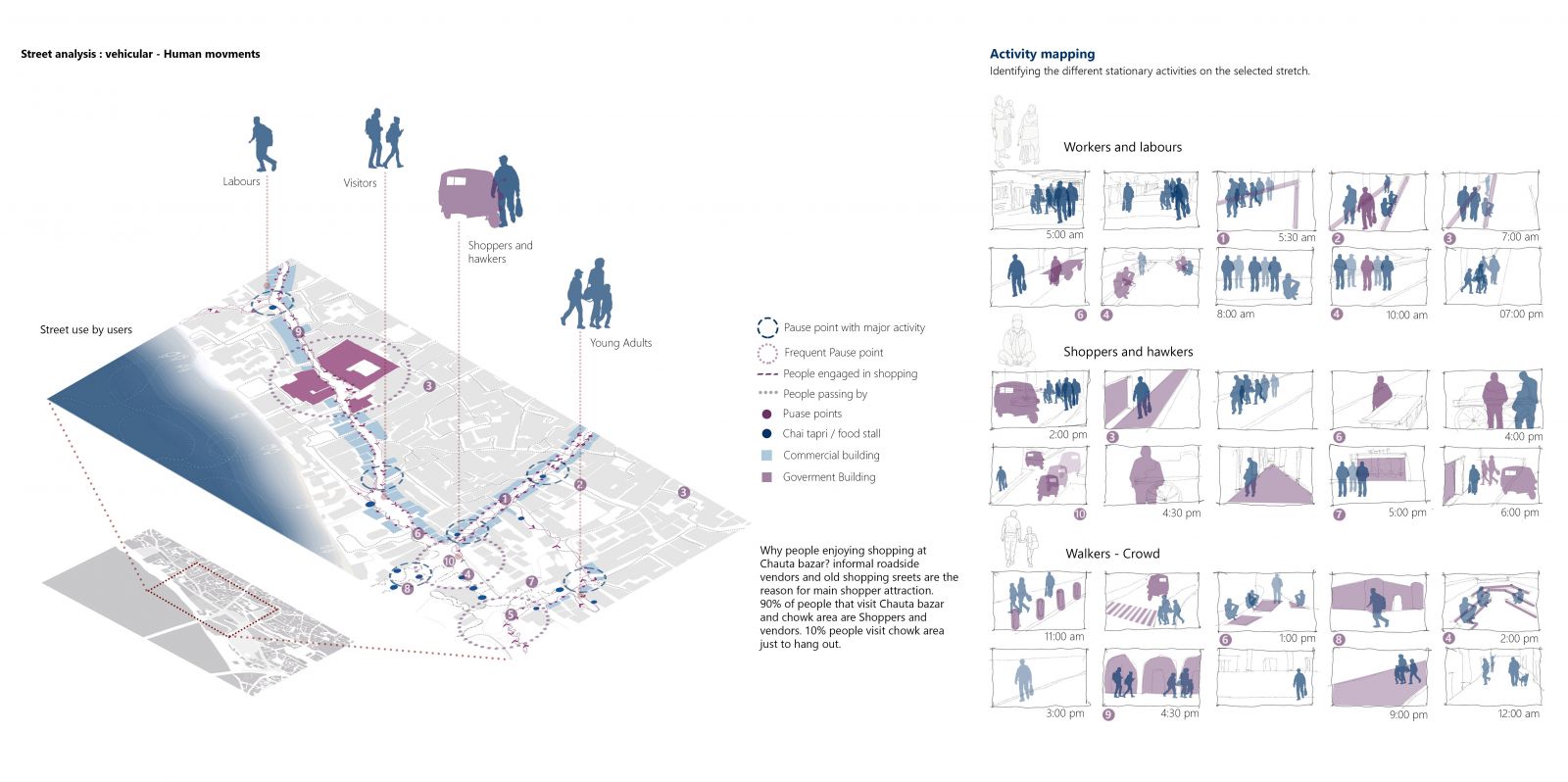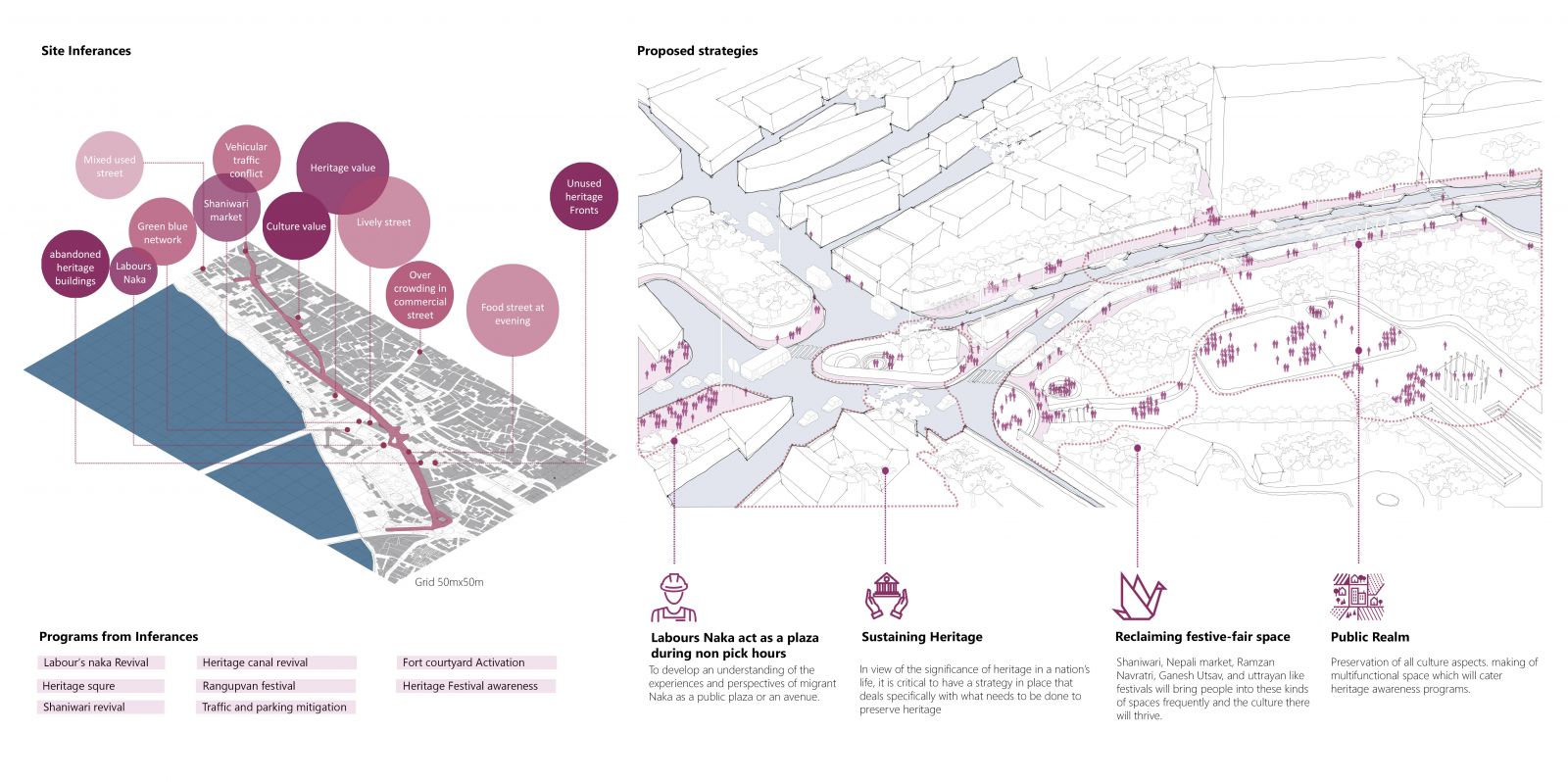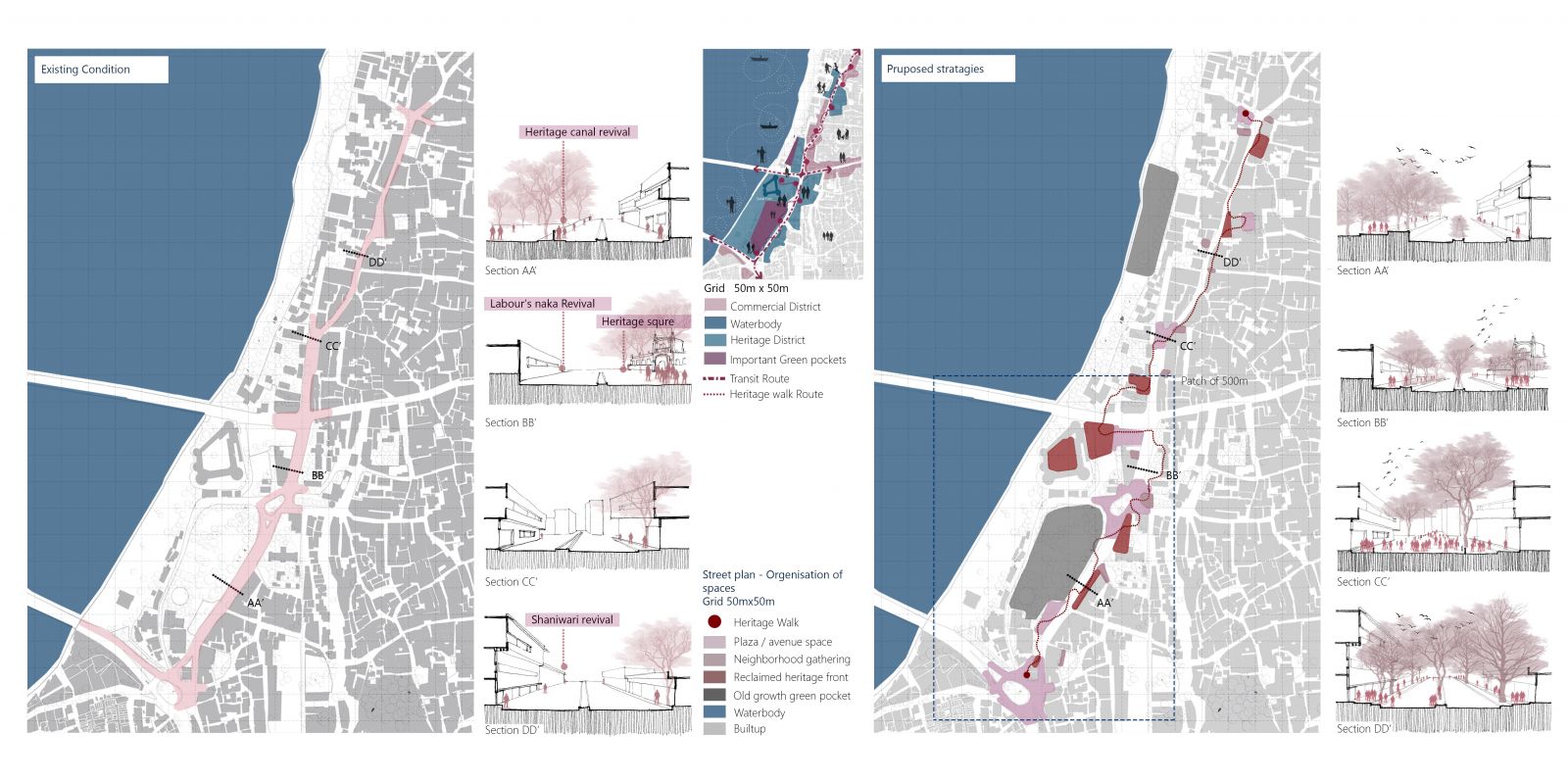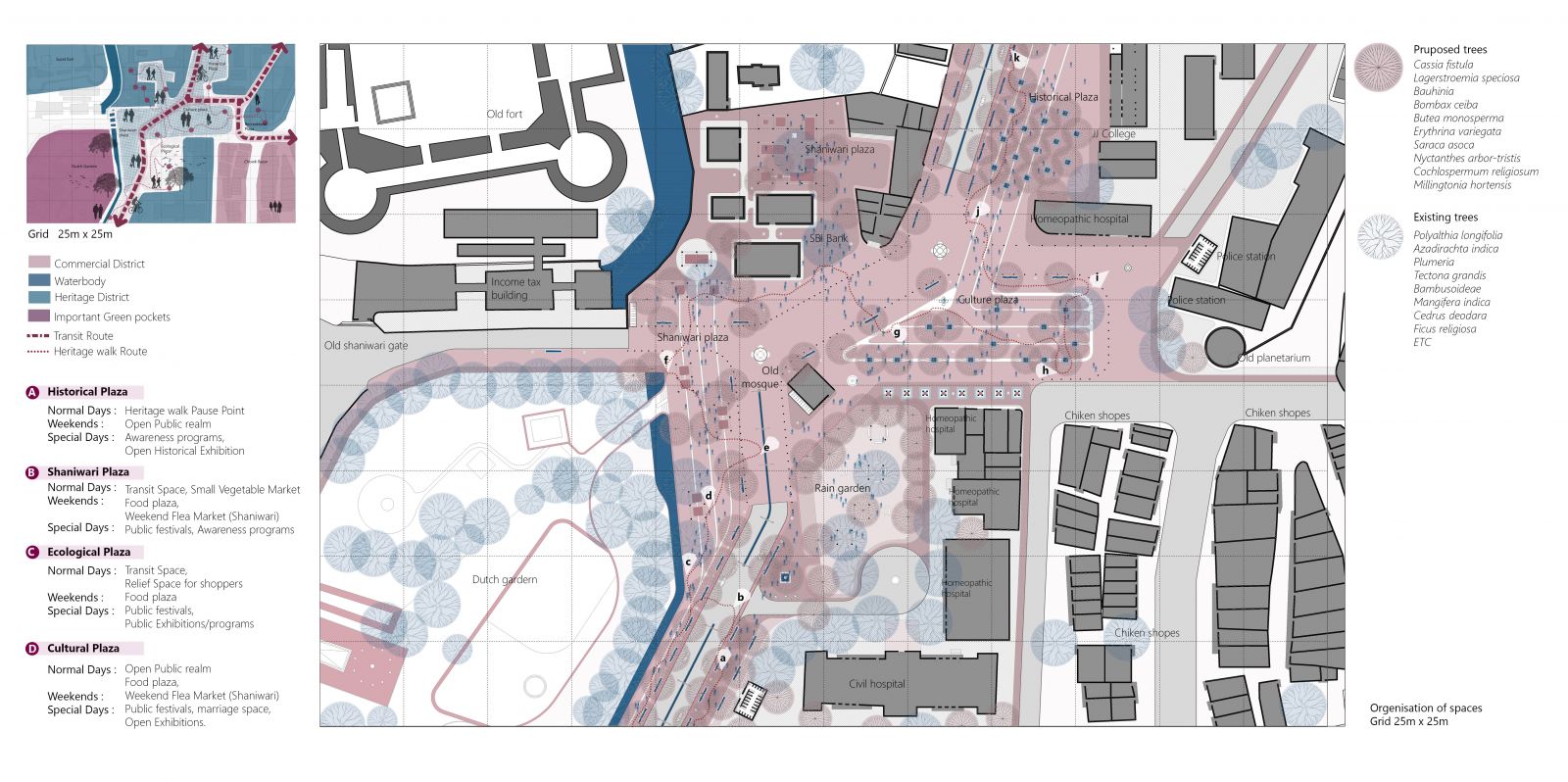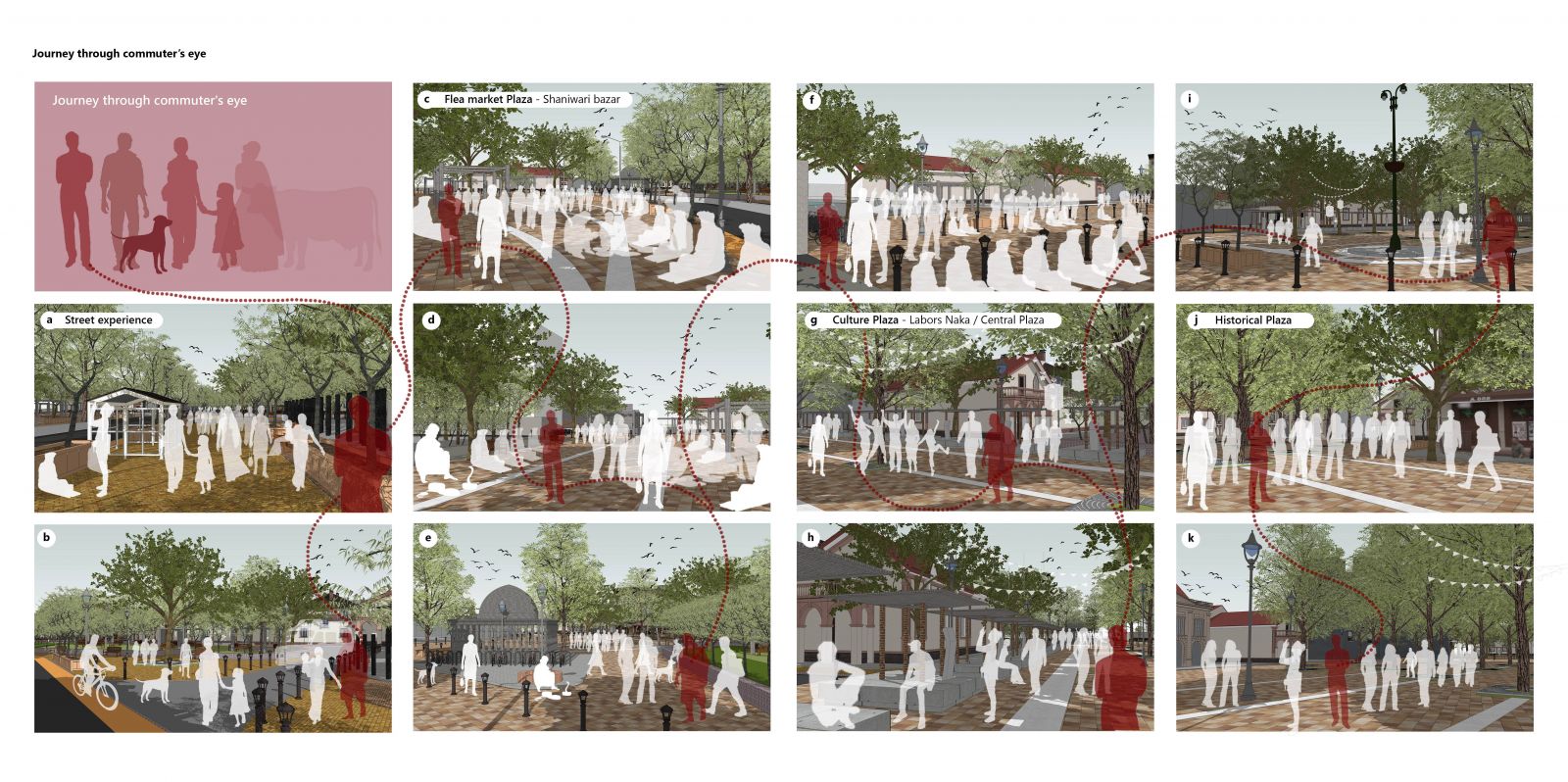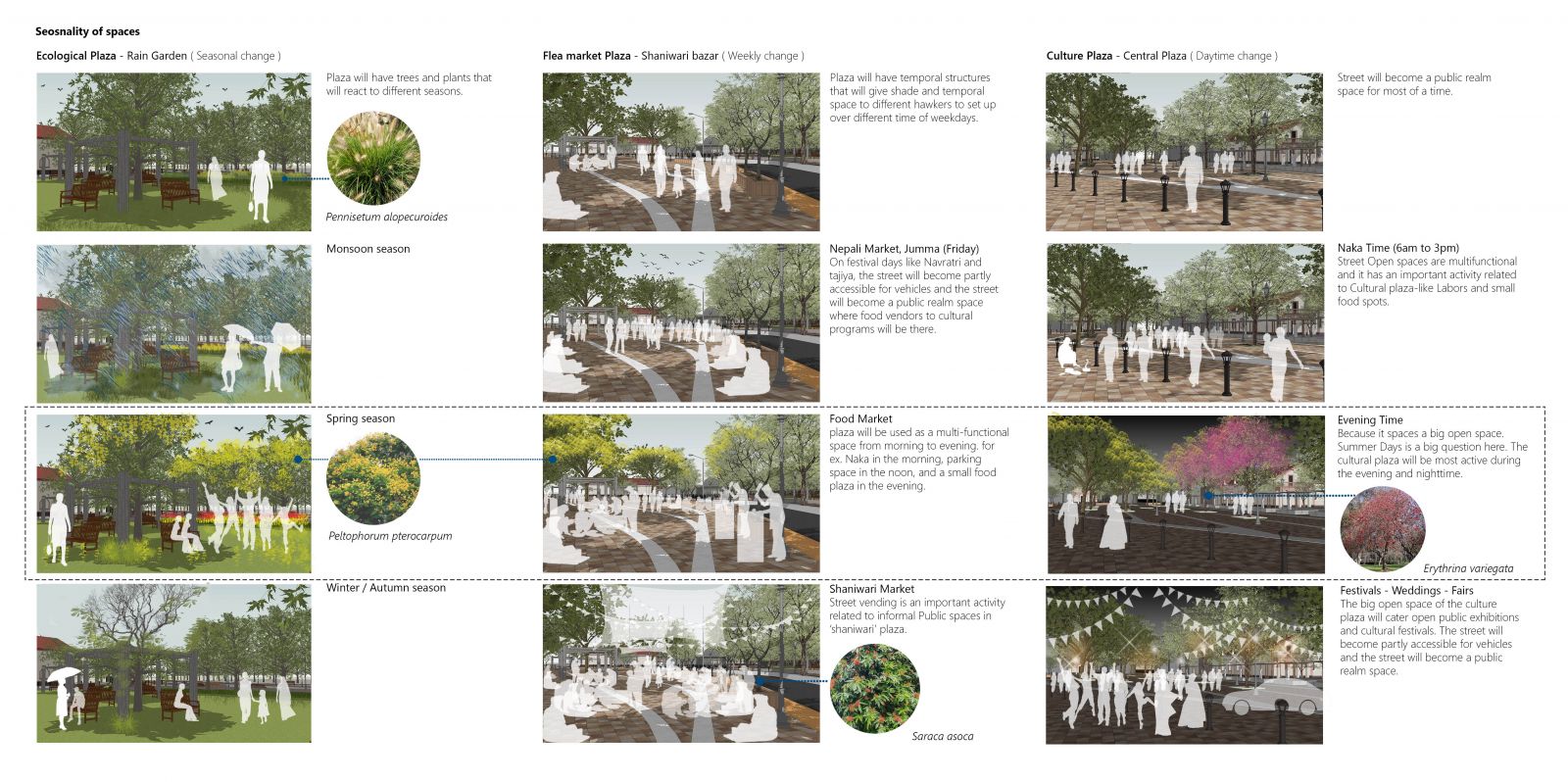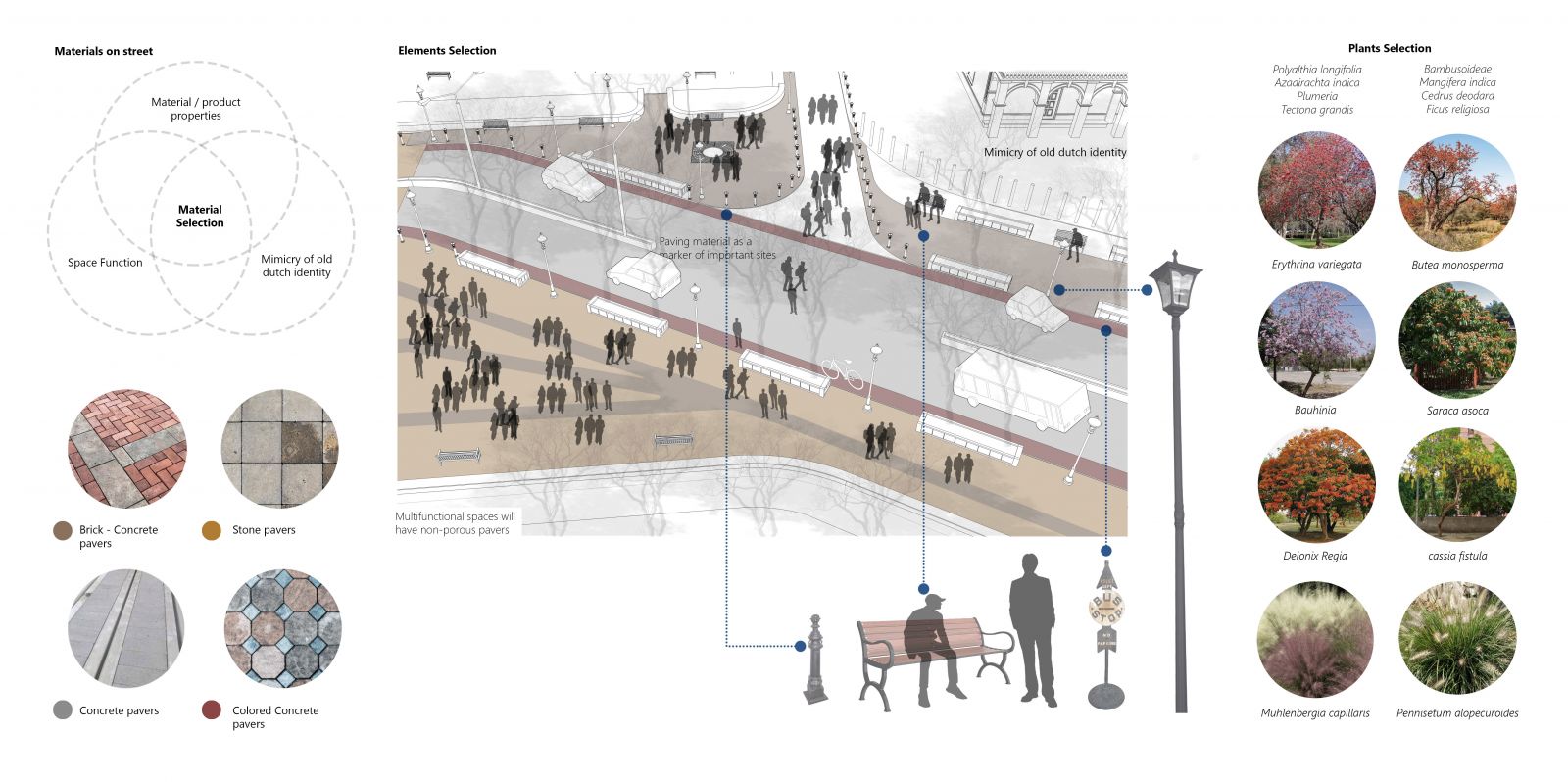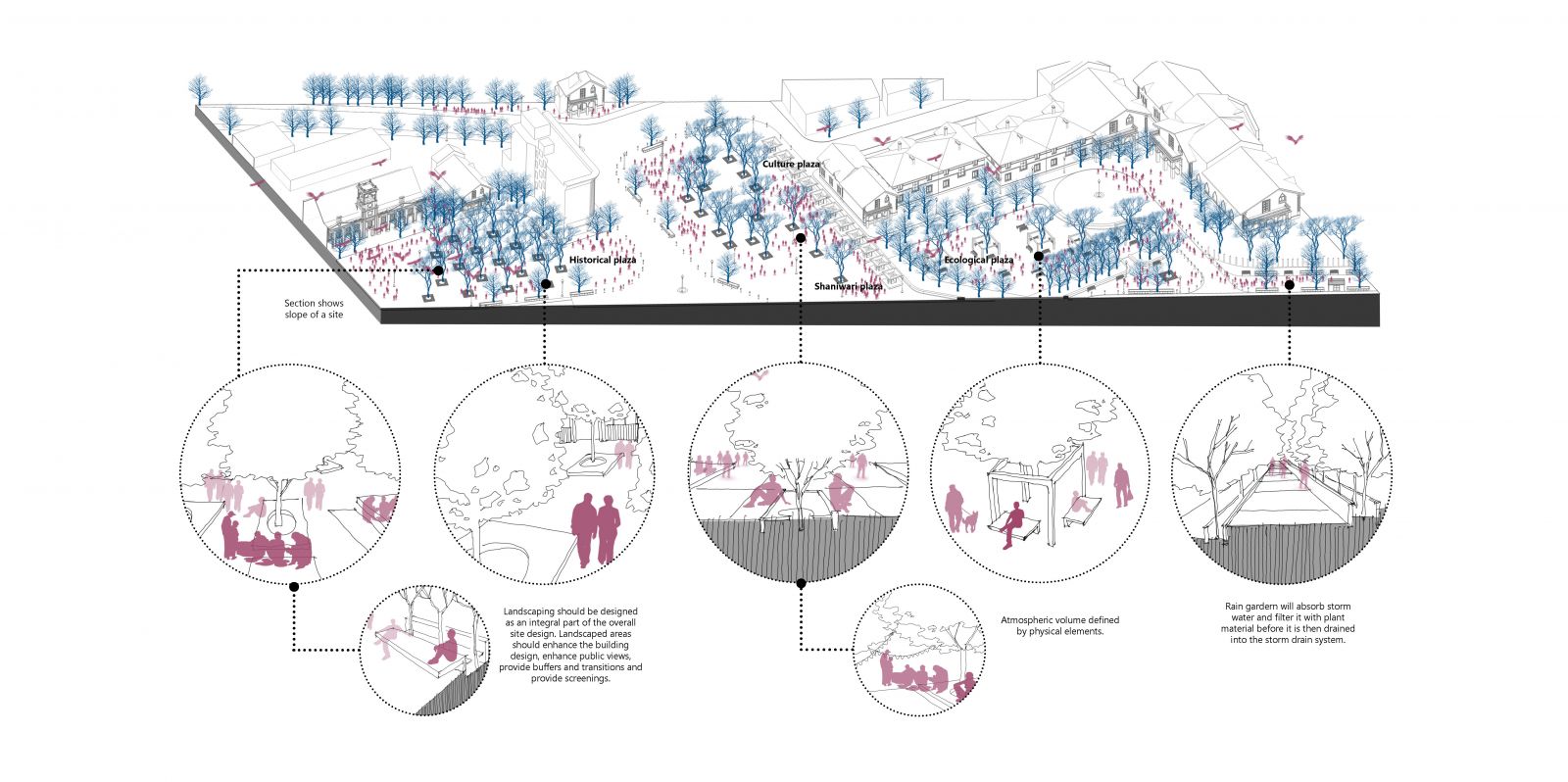Your browser is out-of-date!
For a richer surfing experience on our website, please update your browser. Update my browser now!
For a richer surfing experience on our website, please update your browser. Update my browser now!
Corridor to past. Surat is a large port city on the coast of Gujarat and situated beside the Tapi River. The History of Surat dates back hundreds of years, and there are many important nodes and corridors in the city. The corridor chosen here is a historically meaningful route through which people or goods were moved. So, the idea is to reduce impacts on environmental resources for people, and minimize impacts on the natural environment, and reflect historical and cultural context.
View Additional Work